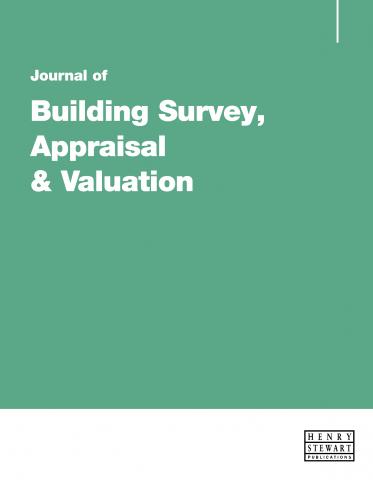“Journal of Brand Strategy combines the latest information from leading academic thinkers together with best practice insights and expertise from branding professionals. Each article is quality controlled with a disciplined peer-review process to insure the Journal’s brand remains professional, credible and relevant. I look forward to each new edition.”
BR209: Site layout planning for daylight and sunlight: A guide to good practice, third edition 2022 — a review
Click the button below to download the full text of the article.
Abstract: Following the UK implementation of European Standard EN 17037:2018 ‘Daylight in Buildings’ in May 2019, and the subsequent withdrawal of British Standard BS 8206–2:2008, the BRE’s 2011 publication ‘Site layout planning for daylight and sunlight: A guide to good practice, second edition (BR209), which is widely regarded as the leading authority on all matters relating to daylight and sunlight at design and planning stage, suddenly became outdated. The industry has since been left in a state of uncertainty when tasked with evaluating the amenity provision of daylight and sunlight within new developments, torn between the tried-and-tested BR209 methodology from the now withdrawn BS 8206 and the newer but more complex British Standard methodology — until now. The eagerly anticipated revised addition of BR209 has now been published, but will it provide clarity on common issues relating to current daylight and sunlight analysis and evaluation methods that are prohibitive to achieving planning permission for higher-density development delivering much-needed housing, or will it only prove to compound these issues? This paper explores the new guidance and reviews the recommended methodology to understand what the changes will mean for developers and neighbours alike.
Keywords: daylight; sunlight; overshadowing; planning; BS EN 17037; amenity; development
Lucy Taggart is an Associate in the Neighbourly Matters team at Hollis. Lucy specialises in rights of light and daylight, sunlight and overshadowing services, with additional wider experience in party wall and other neighbourly matters services. Her work predominantly involves assisting developers and design teams during the planning stages of development projects and advising on the impacts that developments will have on daylight and sunlight amenity, as well as private rights of light. This includes communicating the effects on neighbouring daylight and sunlight amenity to planning officers and committee members and negotiating with affected parties to avoid potential rights of light disputes and to mitigate risk. Recent sustainability-led changes in European Standards in relation to daylight and sunlight amenity and the subsequent alignment of British Standards has necessitated a revised edition of the BRE publication ‘Site layout planning for daylight and sunlight: A guide to good practice’, which is considered the leading authority on daylight and sunlight matters by practitioners and planning officials alike. Taking part in the pre-publication peer review and consultation process, Lucy and the wider specialist team at Hollis have the expertise to provide good-quality and timely advice to the industry.



